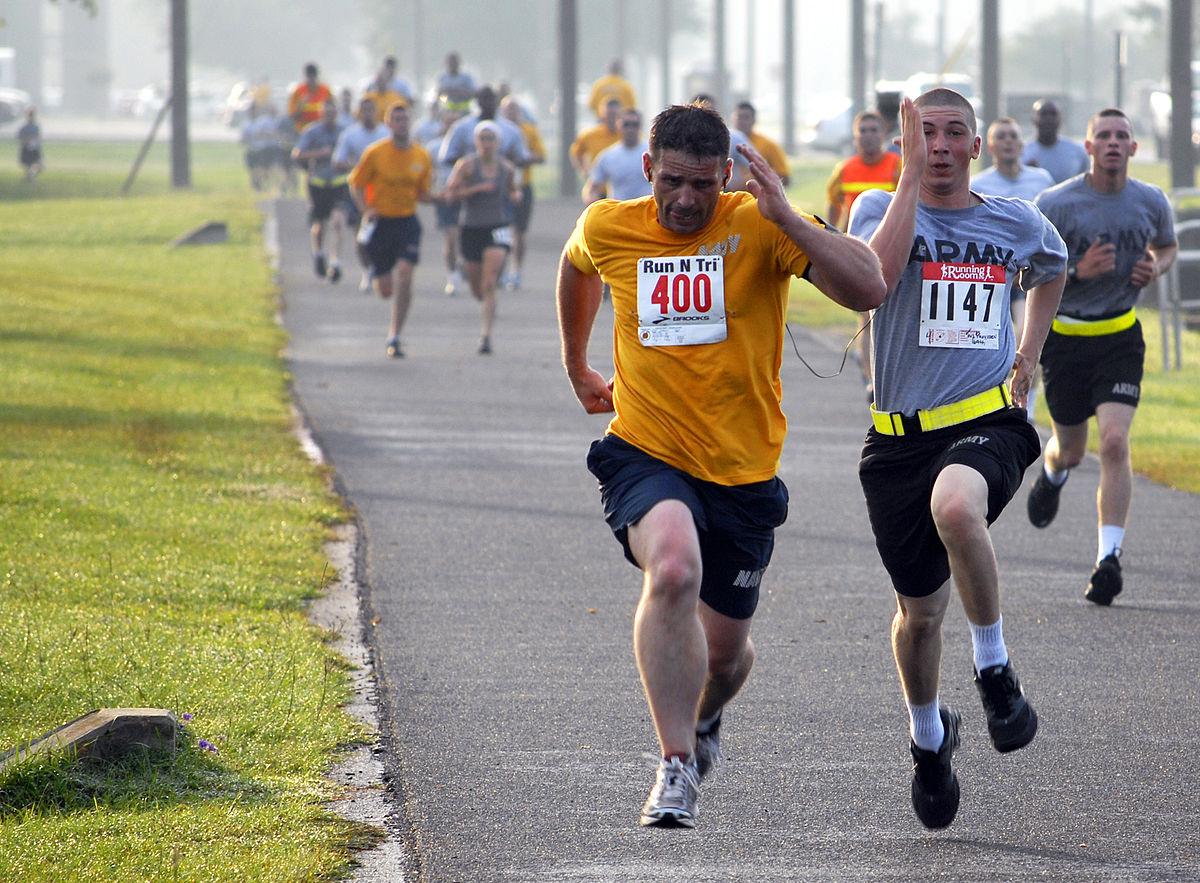This is the time of year when runners sign up for races. It’s motivating to have a goal – knowing that we are going to be challenged to run faster, or further, or climb obstacles, forces us to stick to a training schedule and get out to exercise regularly.
Why don’t we think this way at work? Many companies are introducing sit/stand workstations, anticipating the benefits of a more active work style. Ergonomists everywhere applaud this change – we’ve known for years that variety is the key to avoiding injury. People who stand, walk, and sit have the best jobs of all, from an MSD prevention perspective. (Hey, that’s my job! Ergonomists design great jobs for themselves!) However, providing a standing workstation, and encouraging people to stand, is not enough. Many sit/stand workstations seem to be perpetually stuck in the “sit” position, much maligned by the managers who authorised them.
Standing is hot in the media right now, but the reluctance of the human body to do anything other that what it has been doing recently is universal. Your body gets used to what it does every day, and a challenge beyond about 10 percent more is going to create discomfort. And too much discomfort will lead to injury, or abandoning the goal.
Let’s consider a bunch of rusty runners; they’ve run on the treadmill with dwindling frequency, and they’ve hiked a trail at least weekly, over the winter. They are trying to “re-boot” for spring, so they might start with slow running for 3 minutes and walking for 1 minute (25% walking), for a total distance of 3 km. They’d do that 3 times per week, perhaps a slightly longer distance on the weekend. The next week, they could increase the running duration by about 10%. (Run for 3 minutes and 20 seconds, and walk for 1 minute.) They would also amp up their stretching, and cross train (boot camp, strength training, etc.) to build strength. Running isn’t unique; all sporting activities benefit from the same type of gentle increase in cardiovascular endurance, strength, and flexibility.
Nothing you just read is news. And yet, I don’t know a single person who has not, at least once, gone out and overdone it; we forget about four months of hibernation on the sofa and go out for a 5 k run at the first sign of spring. Or we go out and play an afternoon of hockey, baseball, basketball and discover that Netflix is not good training for skating, swinging, or jumping. And we end up on the injured list for another two months.
Just like professional and recreational athletes, we need to train our body for occupational athletics. We need to build up to a new job, or even a new task within a job. Most healthy people CAN lift 23 kg, very occasionally, in a good posture. But if they haven’t lifted anything in months, we should start with less weight and work up to 23 kg. Most healthy people CAN tolerate raising the arms overhead once or twice a minute, for a whole day, but starting a new employee off with 8 hours of this type of work is asking for double shoulder trouble (say that 10 times fast!). And the same holds true when we introduce a sit/stand desk. Unlike a manufacturing plant, in an office, the employees have the choice to sit; if they overdo it at the beginning, sitting all day is a familiar, comfortable, old habit.
When we developed our new program for offices that are introducing sit/stand workstations, we spent time researching the strengthening and stretching exercises that have been proven most useful in helping workers adapt to standing work. (Yes, research has really shown that strengthening the muscles you need to stand will reduce the risk of discomfort when you introduce a standing workstation.) We took the researched exercises (which are mostly done on the floor), and modified them so they could be done at work. We also included a suggested schedule for increasing the duration of standing, and tons of tips on how to adjust your workstation for standing and sitting, what to wear on your feet, and reminders on how to adjust your chair (which you’ll still be using half the time!) For info on this program (12 slide presentations, intended to be electronically distributed to your employees, on a monthly basis, or made available as-needed), please contact us at info@taylordergo.com.


